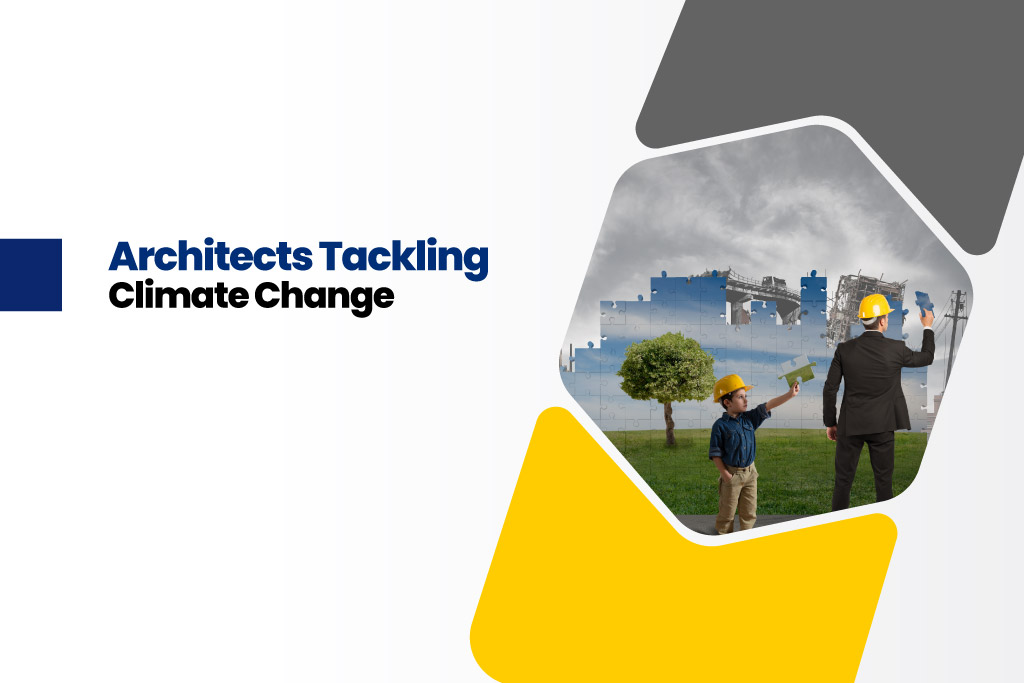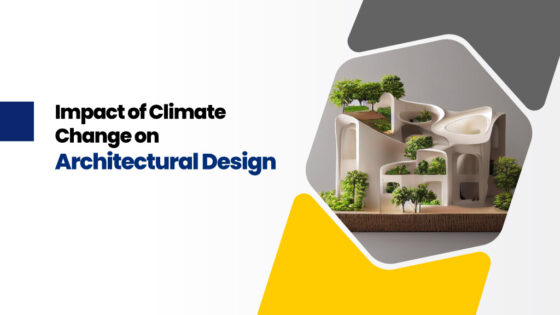Architects are critical to steering the construction industry toward sustainable and eco-friendly practices to tackle climate change. Their decisions on the building’s design, materials, and construction processes heavily influence its energy efficiency and overall environmental impact.
Gain exposure to constructing building structures by integrating eco-friendly practices to ensure sustainability by pursuing a BArch at Coimbatore’s best architecture colleges.
Role of architects in addressing climate change:
Architects integrate passive solar design, efficient insulation, and natural ventilation systems from the planning phase to ensure sustainability. They also promote innovative technologies like green roofs, solar panels, and rainwater harvesting systems to reduce a building’s carbon footprint.
The use of recycled and locally sourced materials can also cut down on transportation emissions and foster a more sustainable construction process. The construction industry significantly contributes to global carbon emissions, accounting for around 42% of global CO2 emissions annually.
The extraction of raw materials, transportation of building components, energy-intensive construction processes, and use of heavy machinery and harmful substances all contribute to the industry’s environmental impact. Recognizing the urgency of integrating sustainable practices within the construction sector is crucial to addressing climate change.
Enrol in BArch programs at the leading architecture colleges in Coimbatore, which empowers you to excel as a brilliant architect in your field.
Let’s delve into the ways and means that architects employ to ensure sustainability and address climate change.
10 approaches employed by architects to address climate change:
Architects play a crucial role in mitigating climate change by advocating for sustainable building design solutions. Pursuing BArch courses at one of the top 10 architecture colleges in Coimbatore, India, exposes you to sustainable approaches in construction, enabling you to make a positive environmental impact.
1) Energy-efficient structures: Passive design strategies that use natural resources like sunlight, wind, and shading reduce a building’s energy consumption. Architects optimize natural light by considering building shape, orientation, window placement, and shading devices.
They also integrate high-performance windows and well-insulated building envelopes to maintain indoor temperatures and minimize the energy required for heating and cooling. Smart technologies and sensors can be used to optimize energy usage and reduce waste.
2) Adaptive reuse: One of the crucial aspects of sustainable architecture is the adaptive reuse of existing structures and the retrofitting of older buildings with sustainable features. This approach reduces the environmental impact of construction by repurposing old buildings instead of demolishing them.
Pursuing BArch programs at one of Coimbatore’s best architecture colleges in Tamil Nadu helps you gain knowledge and practical exposure to retrofitting, which is the addition of eco-friendly features like improved insulation, energy-efficient systems, and renewable energy sources to existing structures.
3) Water management: Architects integrate water-saving measures within building designs, like rainwater harvesting systems, greywater recycling, and water-efficient fixtures. Designing landscapes with drought-resistant plants and permeable surfaces helps drain stormwater and reduces the strain on municipal water resources, thereby enhancing biodiversity and the urban heat island effect.
4) Green infrastructure: Graduating from BArch from Coimbatore’s best architecture colleges equips you with the knowledge to embrace green infrastructure, like green roofs and living walls, which helps enhance biodiversity, reduce heat absorption, and improve air quality. Integrating urban green spaces into building construction provides habitat for wildlife and cools urban environments.
5) Materials and life cycle analysis: Architects critically assess and choose the right materials that are environment-friendly, emphasizing recycled or renewable materials. Conducting life cycle assessments helps determine the environmental impact of materials from extraction to disposal.
Opting for materials that consume less energy, including sustainably sourced or reclaimed wood, recycled steel, bamboo, clay, terrazzo, recycled plastic, or eco-friendly insulation, significantly decreases the building’s overall carbon footprint.
6) Biophilic Design: Graduating from one of the top architecture colleges in Coimbatore equips you with the relevant knowledge and skills to integrate natural elements, patterns, and materials into the built environment to help occupants reconnect with nature.
Architects include features like natural light, indoor plants, and views of nature to improve mental well-being and productivity while reducing the need for artificial lighting and improving indoor air quality.
7) Resilient design: This deals with considering future climate scenarios while constructing building structures to withstand severe conditions and devising adaptive approaches that facilitate modifications as climate patterns change. This minimizes the need for building reconstruction to adapt to extreme weather conditions. This approach reduces the environmental impact of unnecessary construction and ensures that buildings can withstand extreme weather events caused by climate change.
8) Off-site construction: Gain exposure to off-site construction by pursuing BArch at one of the top 10 architecture colleges in Coimbatore,India. Also known as prefabricated or modular construction, it is a sustainable approach to building that minimizes waste, reduces construction timelines, and enhances efficiency.
Construction workers manufacture various building components in a controlled factory setting before transporting and assembling them onsite. This method improves the quality of construction and allows for standardized building modules, leading to faster construction, reduced labour costs, and less onsite disturbance. Off-site construction results in 30% fewer emissions than onsite construction, contributing to a more environmentally friendly and resource-efficient building industry.
9) Digital tools: Tools like BIM are employed to simulate and optimize building performance before construction. They analyze energy usage, daylighting, and material impact, enabling architects to make informed design decisions that minimize environmental impact and enhance productivity.
10) Restorative architecture: Gain exposure to restorative architecture by pursuing BArch at Coimbatore’s best architecture colleges. It focuses on creating buildings and spaces that minimize negative environmental impacts and actively contribute to ecological restoration and improvement. It goes beyond sustainability by aiming to heal and enhance ecosystems, positively contributing to nature and communities.
Gain the essential learnings on making conscientious choices by pursuing BArch at Coimbatore’s best architecture colleges in Tamil Nadu and advocating for sustainable approaches while constructing building structures. Since your decisions impact the immediate environment and contribute to a global effort to deal with climate change.






